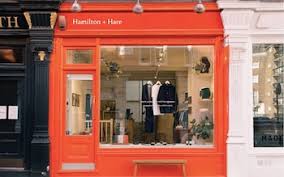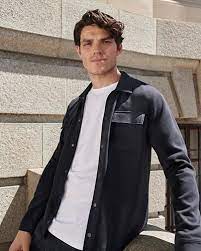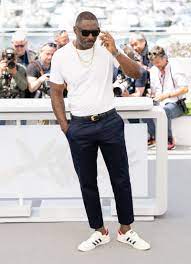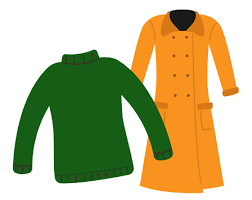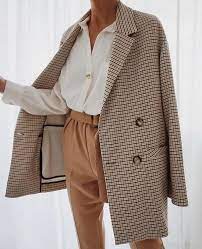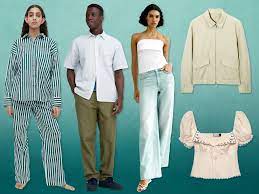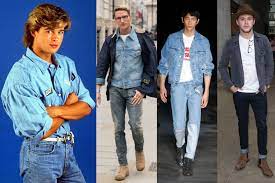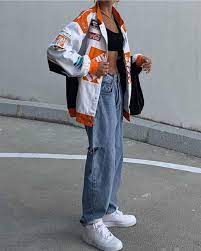Classic Style: Timeless Elegance That Never Fades
In a world of ever-changing fashion trends, there is something truly remarkable about classic style. It stands the test of time, defying fleeting fads and passing seasons. Classic style embodies elegance, sophistication, and a sense of timeless beauty that never fades.
What exactly defines classic style? It is characterized by clean lines, simple silhouettes, and understated elegance. Classic pieces are often neutral in color or feature timeless patterns such as stripes or checks. They are versatile and can be effortlessly mixed and matched to create a variety of looks.
One of the key elements of classic style is quality craftsmanship. Classic pieces are made to last, crafted with attention to detail and using high-quality materials. Whether it’s a tailored blazer, a well-fitted pair of trousers, or a beautifully constructed dress, classic garments exude an air of refinement that transcends trends.
Classic style also emphasizes modesty and grace. It prioritizes subtlety over flamboyance, allowing the wearer’s natural beauty to shine through. It exudes confidence without being ostentatious and commands attention through its understated allure.
Another aspect that sets classic style apart is its ability to adapt to different occasions and settings. A well-curated collection of classic pieces can take you from the office boardroom to an evening soirée with ease. By adding statement accessories or layering creatively, you can effortlessly transform your classic ensemble into something fresh and contemporary.
The appeal of classic style extends beyond fashion itself; it has become a lifestyle choice for many individuals who appreciate its enduring charm. It represents an appreciation for tradition while embracing modernity in subtle ways. Classic style enthusiasts understand that true elegance lies not in following every trend but in curating a wardrobe that reflects their personal taste and values.
Moreover, classic style doesn’t discriminate based on age or body type. Its versatility allows individuals to embrace their unique features and showcase their beauty at any stage of life. Classic pieces have the power to make a statement without overpowering the wearer, making them universally flattering and empowering.
In a world that often seems consumed by fast fashion and disposable trends, classic style offers a refreshing alternative. It encourages us to slow down, appreciate quality over quantity, and invest in timeless pieces that will remain relevant for years to come.
So, whether you’re drawn to the elegance of a little black dress, the sophistication of tailored suits, or the simplicity of a white shirt, embracing classic style allows you to embody timeless elegance. It is an expression of individuality that transcends passing trends and creates a lasting impression wherever you go.
In conclusion, classic style is more than just a fashion choice; it is a way of life. It represents an appreciation for enduring beauty and an understanding that true style is not dictated by what’s popular today but by what withstands the test of time. Embracing classic style means embracing your own unique elegance and radiating confidence wherever you go.
5 Essential Tips for Achieving a Classic Style
- Invest in timeless pieces – classic style is all about quality over quantity, so invest in well-made items that will last for years to come.
- Stick to neutral colours – opt for muted tones such as navy, grey and beige which are easy to mix and match with other pieces.
- Choose classic cuts – look for clothing with clean lines and simple silhouettes which won’t date quickly.
- Add a few statement pieces – choose one or two items that stand out from your otherwise timeless wardrobe, like a bright coloured blazer or printed scarf.
- Accessorise wisely – use accessories like watches, hats and scarves to add personality without compromising on the classic look you’re going for!
Invest in timeless pieces – classic style is all about quality over quantity, so invest in well-made items that will last for years to come.
Invest in Timeless Pieces: The Key to Classic Style
When it comes to classic style, the mantra is quality over quantity. In a world where fast fashion dominates, investing in well-made, timeless pieces is the secret to achieving that effortlessly chic and timeless look.
Classic style is all about selecting garments that will stand the test of time. Instead of filling your wardrobe with trendy items that will lose their appeal after a few wears, focus on building a collection of high-quality pieces that exude elegance and sophistication.
Why is investing in timeless pieces so important for classic style? Firstly, well-made items tend to have superior craftsmanship. From the stitching to the fabric choice, attention to detail is evident in every aspect. This not only ensures durability but also enhances the overall aesthetic appeal.
By choosing quality over quantity, you’re also making an eco-conscious decision. Fast fashion often contributes to environmental issues due to its disposable nature. Investing in durable garments reduces waste and promotes sustainable fashion practices.
Moreover, timeless pieces offer versatility. The beauty of classic style lies in its ability to create multiple looks with just a few key items. A carefully curated wardrobe consisting of well-made essentials can be mixed and matched endlessly, allowing you to effortlessly transition from day to night or adapt to various occasions.
When selecting timeless pieces for your wardrobe, consider classic staples such as a tailored blazer, a little black dress, a crisp white shirt, or well-fitted trousers. These items are not only versatile but also serve as the foundation for countless outfit combinations.
Remember that classic style doesn’t mean sacrificing personal expression or individuality. Look for details or subtle accents that reflect your unique taste while still maintaining that timeless appeal. Whether it’s an interesting neckline on a blouse or an unexpected pattern on a skirt, these small touches can add character without compromising on elegance.
Lastly, investing in timeless pieces means investing in yourself. When you wear well-made garments that fit impeccably and flatter your figure, you exude confidence and radiate a sense of self-assured elegance. Classic style is about embracing your own unique beauty and expressing it through carefully selected pieces that make you feel your best.
In conclusion, the key to classic style lies in investing in timeless pieces. By prioritizing quality over quantity, you’ll not only build a wardrobe that stands the test of time but also contribute to sustainable fashion practices. Remember, classic style is an expression of your personal taste and values, so choose well-made items that reflect your individuality while embodying timeless elegance.
Stick to neutral colours – opt for muted tones such as navy, grey and beige which are easy to mix and match with other pieces.
Classic Style Tip: Embrace the Power of Neutrals
When it comes to mastering classic style, one tip stands out above the rest: stick to neutral colors. Opting for muted tones such as navy, grey, and beige can elevate your wardrobe to new heights of sophistication. Not only do these timeless hues exude elegance, but they also offer endless possibilities for mixing and matching with other pieces.
Neutrals have a unique ability to create a cohesive and polished look effortlessly. By building your wardrobe around these versatile shades, you can easily create a multitude of outfits suitable for any occasion. Whether it’s a professional setting or a casual outing, neutrals provide a solid foundation for expressing your personal style.
Navy is a particularly powerful neutral that adds depth and richness to any ensemble. It exudes confidence and professionalism while remaining understated. A navy blazer paired with grey trousers or beige chinos creates an effortlessly chic look that can transition seamlessly from the office to after-work social events.
Grey is another versatile neutral that offers a contemporary edge. Its cool undertones make it incredibly easy to pair with other colors, allowing you to experiment with different combinations while maintaining an air of sophistication. A grey sweater layered over a white shirt or paired with black trousers creates an effortlessly stylish monochromatic look.
Beige, often associated with understated elegance, brings warmth and timelessness to your wardrobe. This versatile neutral pairs beautifully with other neutrals or can be used as a canvas for bolder accents. A beige trench coat worn over jeans and a white blouse exudes classic charm while protecting you from the elements in style.
By sticking to neutral colors like navy, grey, and beige, you open up endless possibilities for creating cohesive outfits that are both stylish and timeless. These hues provide the perfect backdrop for incorporating statement accessories or pops of color when you want to add some flair to your ensemble.
Furthermore, neutrals offer practical advantages as well. They are less likely to show signs of wear and tear, making them a smart investment for building a durable and long-lasting wardrobe. Additionally, their versatility means you can create multiple outfits with just a few key pieces, making getting dressed in the morning a breeze.
In conclusion, when it comes to classic style, sticking to neutral colors is a game-changer. Embrace the power of navy, grey, and beige to create a wardrobe that exudes timeless elegance. These muted tones provide the perfect canvas for mixing and matching with other pieces while offering endless possibilities for expressing your personal style. So next time you’re updating your wardrobe, remember the magic of neutrals and watch as your classic style truly shines.
Choose classic cuts – look for clothing with clean lines and simple silhouettes which won’t date quickly.
Choose Classic Cuts: Timeless Elegance That Stands the Test of Time
When it comes to cultivating a classic style, one of the most important tips to keep in mind is to choose clothing with classic cuts. Clean lines and simple silhouettes are the foundation of timeless elegance that won’t date quickly.
Classic cuts are characterized by their simplicity and versatility. They are designed to flatter a variety of body types and can be easily incorporated into different outfits for various occasions. By opting for classic cuts, you can create a wardrobe that remains relevant season after season.
One advantage of choosing classic cuts is their ability to transcend passing trends. While fashion trends come and go, classic pieces endure because they focus on the essence of style rather than temporary fads. With their clean lines and simple silhouettes, these garments possess an understated sophistication that never goes out of fashion.
Classic cuts also allow you to showcase your personal style without being overwhelmed by excessive details or embellishments. They provide a canvas for you to express your individuality through accessories or complementary pieces. By investing in clothing with classic cuts, you can create a versatile capsule wardrobe that effortlessly exudes elegance.
Moreover, classic cuts offer longevity in terms of wearability and durability. Their timeless appeal means they can be worn year after year without looking dated or out of place. When you choose well-constructed garments with clean lines, you’re investing in quality craftsmanship that ensures your clothes will stand the test of time.
Whether it’s a tailored blazer, a little black dress, or a pair of well-fitted trousers, choosing classic cuts allows you to build a wardrobe that transcends seasons and trends. These versatile pieces can be dressed up or down depending on the occasion and paired with different accessories to create endless outfit possibilities.
In conclusion, when it comes to cultivating a classic style, choosing clothing with clean lines and simple silhouettes is key. Classic cuts offer timeless elegance that won’t date quickly, allowing you to create a wardrobe that withstands the test of time. By investing in well-constructed garments with classic cuts, you can embrace your personal style while exuding an effortless sophistication that never goes out of fashion.
Add a few statement pieces – choose one or two items that stand out from your otherwise timeless wardrobe, like a bright coloured blazer or printed scarf.
Elevate Your Classic Style: The Power of Statement Pieces
When it comes to classic style, sometimes all it takes is a touch of boldness to breathe new life into your timeless wardrobe. Adding a few statement pieces can instantly transform your look, infusing it with personality and flair while still maintaining that elegant and sophisticated appeal.
The beauty of statement pieces lies in their ability to make a strong impact without overpowering the overall aesthetic. By carefully selecting one or two items that stand out from your classic collection, you can create a captivating focal point that draws attention and adds a modern twist to your ensemble.
Consider incorporating a bright colored blazer into your wardrobe. A vibrant hue like cobalt blue or fiery red can inject energy and vibrancy into an otherwise neutral outfit. Pair it with tailored trousers or a sleek dress for a striking contrast that exudes confidence and individuality.
Another option is to opt for a printed scarf. Choose one with an eye-catching pattern or vibrant colors that complement your existing wardrobe. Whether you wear it as an accessory around your neck, tie it as a hair accessory, or even drape it over your shoulders, the scarf will instantly elevate your look and add visual interest.
The key to successfully incorporating statement pieces is balance. Let them take center stage by keeping the rest of your outfit relatively understated. This allows the statement piece to shine without overwhelming the overall aesthetic. Remember, classic style is about creating harmony between timeless elegance and modern touches.
Statement pieces offer versatility too – they can be easily interchanged with different outfits, giving you endless possibilities for creating unique ensembles. A single bold blazer or printed scarf can become the focal point of multiple outfits, allowing you to maximize their impact while maintaining the essence of classic style.
Don’t be afraid to experiment and step outside your comfort zone when choosing statement pieces. They provide an opportunity for self-expression and allow you to infuse your personal style into your classic wardrobe. Whether you opt for a daring color, an unexpected pattern, or a unique accessory, embrace the power of statement pieces to showcase your individuality.
In conclusion, adding a few statement pieces to your classic style repertoire can take your look from timeless to unforgettable. By carefully selecting one or two items that stand out, like a bright colored blazer or printed scarf, you can effortlessly infuse your wardrobe with personality and flair. Embrace the power of these statement pieces to create a captivating and modern twist on classic style while maintaining its timeless elegance.
Accessorise wisely – use accessories like watches, hats and scarves to add personality without compromising on the classic look you’re going for!
Accessorise Wisely: Adding Personality to Classic Style
When it comes to classic style, it’s all about finding the perfect balance between timeless elegance and personal flair. One way to achieve this delicate equilibrium is by accessorising wisely. By incorporating accessories like watches, hats, and scarves into your outfit, you can infuse your classic look with a touch of personality without compromising its inherent charm.
A well-chosen watch can be more than just a timekeeping device; it can be a statement piece that adds sophistication and refinement to your overall ensemble. Opt for a classic design with a leather or metal strap that complements the colours in your outfit. A sleek watch not only adds a touch of luxury but also showcases your attention to detail.
Hats are another fantastic accessory that can elevate your classic style. Whether it’s a chic fedora, a timeless beret, or an elegant wide-brimmed hat, these headpieces instantly add an air of sophistication to any outfit. Choose a hat that suits your face shape and complements the overall aesthetic you’re aiming for. Not only will it protect you from the elements, but it will also make you stand out with effortless style.
Scarves are versatile accessories that can be worn in various ways to enhance your classic look. A silk scarf tied around the neck adds a touch of elegance and femininity, while a cashmere scarf draped over the shoulders exudes timeless charm and warmth. Experiment with different patterns and colours to find the perfect scarf that complements your outfit while expressing your unique personality.
Remember, when accessorising for classic style, less is often more. Choose one or two statement accessories that complement each other rather than overwhelming your look with too many pieces. The goal is to enhance the overall aesthetic without overshadowing the elegance of your classic ensemble.
Accessorising wisely allows you to showcase your individuality while staying true to the essence of classic style. By selecting accessories that harmonize with your outfit, you can add a personal touch that reflects your personality and elevates your look to new heights.
So, whether you’re donning a tailored suit or a little black dress, don’t be afraid to experiment with accessories. Embrace the power of a well-chosen watch, a stylish hat, or an exquisite scarf to infuse your classic style with your own unique flair. Remember, it’s the small details that make all the difference in creating an ensemble that exudes timeless elegance while reflecting your individuality.
